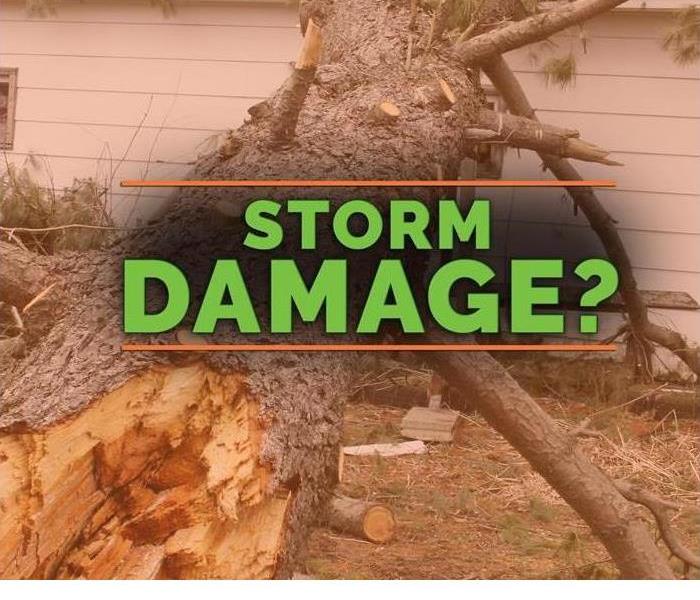The Need for Storm Damage Restoration
6/19/2018 (Permalink)
The Need for Storm Damage Restoration
Ice damage, hail damage, storm damage, hurricane damage, flooding and wind damage all have the potential to cause far-reaching damage when they strike. However, not all is lost. Storm restoration can help salvage most of the items in a house. Homeowners count their losses too quick before engaging the services of storm restoration experts.
The services of home restoration can be enlisted for damages such as river flooding, hail damage, flood water damage, ground water damage, ice damage, flooding, hurricane damage and wind damage. No calamity is too big or small for them. In light of the recent storm damages that have rocked the country, it is prudent for homeowners to have contacts of water restoration experts on storm remediation.
It is important to know the effects of harsh weather so that homeowners understand the need for storm remediation. Wind damage, for instance, can cause heavy roof damage. Roof damage is mainly from loose tiles or shingles. Wind damage after winter can also cause moisture from ice damming or formation of ice dams to sip through the roof. Homes with wooden roofs can experience wood swelling. This leads to further roof damage necessitating immediate repair.
Ice damming and ice dams should be professionally handled because of the risk they pose. A simple leak can advance into a huge crack. It is ill-advised to stay long before conducting roof repair. Ice damming also exert weight on the roof. The ice dam pools should not be left to stay on the roof for too long.
There are various strategies that homeowners can take as measures of storm remediation. For instance, those who live in areas more prone to winter damage or wind damage can consider installing roofs with a higher slope. This goes a long way in reducing the cost of regular roof leak repairs. It also minimizes roof leaks.
Postponing roof repair especially from ice dams and ice damming only leads to more costs. A simple roof leak repair can turn into a roof replacement if not handled immediately. It is also crucial to conduct roof inspection, especially after a storm warning. This minimizes the costs to be incurred in roof repair after the storm damage happens. A roof inspection will identify all the damaged places, and the roof repair will be handled in time. All roof leaks are also sealed to ensure that the roof is able to withstand the coming weather damage.
Hurricane damage, flood water damage, hail damage, wind damage, ice damage, storm damage and river flooding experts are trained to handle such harsh weather conditions. The water restoration arrive at the scene of the damage immediately. Water restoration efforts must be done promptly so as to prevent further damage. These activities are done after an assessment of the extent of flooding, ground water levels, and the flood water. An assessment is what informs their actions to deal with the storm damage, ground water, and flooding.
It is important to note that ice damage, hurricane damage, roof damage, flood water damage and hail damage all have different methods of water restoration and storm remediation. The team, therefore, needs to come up with the right storm restoration strategy based on the type of damage at hand.
Homeowners need to explain the type of damage so that the home restoration experts can come with the right tools and gear to carry out storm remediation. One such tool is a flood pump. These flood pumps are used to drain water after a flooding or water damage. A flood pump can also work automatically. It can be left in a room to drain the ground water. The pumps are able to handle the ground water even as it rises. Commercial flood pumps are also available to deal with massive flood water situations such as river flooding. In a home application, the flood pumps can be used with vacuums.
Another common issue is frozen pipes, especially after a winter damage. Frozen pipes prevent a free flow of water through the pipes. If the temperatures are still low, it may take time before the frozen pipes unfreeze. It is not advisable to apply heat to the frozen pipes. Handling of these frozen pipes should be left to the storm restoration or home restoration experts.




 24/7 Emergency Service
24/7 Emergency Service
